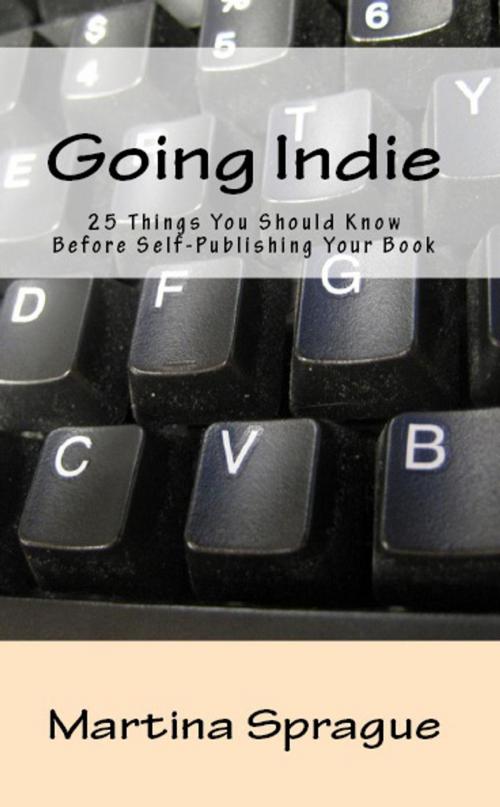Going Indie: 25 Things You Should Know Before Self-Publishing Your Book
Writer Talk
Nonfiction, Reference & Language, Language Arts, Writing & Publishing, Editing & Proofreading, Authorship, Composition & Creative Writing| Author: | Martina Sprague | ISBN: | 9781507052099 |
| Publisher: | Martina Sprague | Publication: | December 30, 2014 |
| Imprint: | Language: | English |
| Author: | Martina Sprague |
| ISBN: | 9781507052099 |
| Publisher: | Martina Sprague |
| Publication: | December 30, 2014 |
| Imprint: | |
| Language: | English |
Self-publishing used to be the last resort when an author had exhausted all other channels. Self-publishing meant that your book wasn’t good enough for a traditional publisher. Even if you knew your sales would be virtually nil, you self-published because your vanity required it; you self-published so that you could say that you had published a book, even if it never sold a single copy. Since the e-book explosion, self-publishing no longer carries the stigma it did a few years ago; it is no longer considered equivalent to vanity publishing.
If you choose to go independent, your luck is that self-publishing has become a whole lot easier in the last few years since the advent of the digital age. Self-publishing is no longer a last resort, but a conscious choice that comes with many advantages over traditional publishing. The technology available today has made it possible to self-publish in both electronic and paperback versions, even if you don’t have a penny to invest in the process. The electronic book market is growing, and publishers have traditionally paid lousy royalties on electronic books. Despite your lack of publishing experience, you might have a better chance making money if you self-publish rather than pursue a traditional publisher.
But knowledge is power, and it is crucial to educate yourself on the process and be aware of the factors that might influence your decision. Going Indie: 25 Things You Should Know Before Self-Publishing Your Book, offers a number of tips that will raise your awareness of the benefits of self-publishing over traditional publishing.
Self-publishing used to be the last resort when an author had exhausted all other channels. Self-publishing meant that your book wasn’t good enough for a traditional publisher. Even if you knew your sales would be virtually nil, you self-published because your vanity required it; you self-published so that you could say that you had published a book, even if it never sold a single copy. Since the e-book explosion, self-publishing no longer carries the stigma it did a few years ago; it is no longer considered equivalent to vanity publishing.
If you choose to go independent, your luck is that self-publishing has become a whole lot easier in the last few years since the advent of the digital age. Self-publishing is no longer a last resort, but a conscious choice that comes with many advantages over traditional publishing. The technology available today has made it possible to self-publish in both electronic and paperback versions, even if you don’t have a penny to invest in the process. The electronic book market is growing, and publishers have traditionally paid lousy royalties on electronic books. Despite your lack of publishing experience, you might have a better chance making money if you self-publish rather than pursue a traditional publisher.
But knowledge is power, and it is crucial to educate yourself on the process and be aware of the factors that might influence your decision. Going Indie: 25 Things You Should Know Before Self-Publishing Your Book, offers a number of tips that will raise your awareness of the benefits of self-publishing over traditional publishing.















